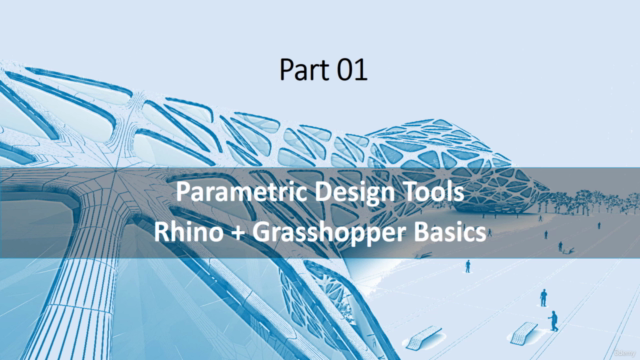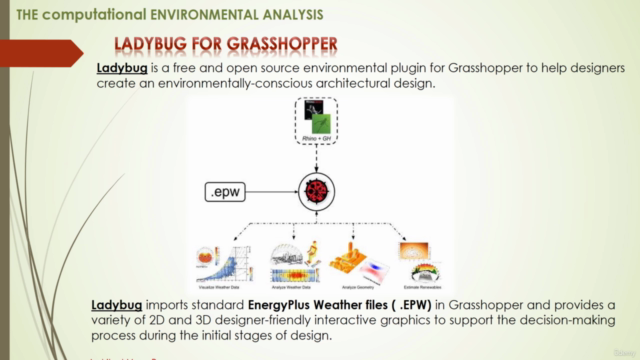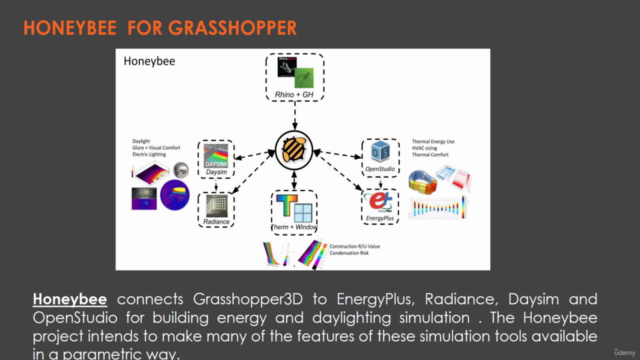Computational Environmental design in ladybug1.4 course

Why take this course?
🌱 Unlock the Potential of Sustainable Design with Computational Environmental Design in Ladybug 1.4 Mini Course! 🎓
Course Headline:
"Mastering Ladybug Tools 1.4 for Eco-Friendly Design with Rhinoceros 3D and Grasshopper 3D - A Comprehensive Arabic Online Course"
Course Title:
"Computational Environmental Design in Ladybug Tools 1.4 with Rhinoceros 3D and Grasshopper 3D - Mini Course in Arabic"
Course Description:
Embark on a transformative journey into the world of sustainable design with our "Computational Environmental Design in Ladybug Tools 1.4 with Rhinoceros 3D and Grasshopper 3D" mini-course. This course is meticulously tailored for Arabic-speaking learners who aspire to harness the power of computational tools to create environmentally conscious architectural designs.
As architects and designers increasingly turn towards parametric and generative design methodologies, the line between innovative construction and harmonious natural integration fades, giving rise to a new era of eco-friendly architecture. By integrating the latest digital technologies with traditional and sustainable solutions, we can achieve remarkable environmental objectives at an unprecedented scale.
Course Content:
Dive into the world of Computational Environmental Design! Our course is structured to guide you through each step of using Ladybug and Honeybee V 1.4 in conjunction with Rhinoceros 3D and Grasshopper 3D. You'll learn to:
-
Get Climate Data & Analyze It: Understand the local climate, temperature, humidity, and wind patterns of your project site.
- Temperature
- Humidity
- Wind rose/ wind profile
-
Microclimate Study: Explore how different architectural forms can influence the immediate environment.
- Outdoor comfort study
- Solar radiation study
-
Daylighting Study: Evaluate the quality and distribution of natural light within a building, ensuring optimal daylit spaces.
- Illuminance study of building rooms
-
Energy Simulation: Assess the energy use and indoor thermal comfort of your designs.
- Energy use
- Indoor thermal comfort study
Course Outcome:
Upon completion of this course, you will be equipped with the knowledge to:
- Obtain and analyze climate data for your project site.
- Develop a building concept that considers both environmental impact and user comfort.
- Make informed decisions regarding building form, orientation, materials, and passive design techniques.
- Test internal daylighting illuminance to ensure natural light permeates living spaces.
- Evaluate the indoor thermal comfort to ensure occupant satisfaction.
- Assess energy use of building rooms to optimize for sustainability.
Why Choose This Course?
- Practical Learning: Engage with real-world examples and hands-on projects to solidify your understanding of computational environmental design.
- Expert Instructor: Learn from a professional who is well-versed in Ladybug, Honeybee, Rhinoceros 3D, and Grasshopper 3D.
- Language Comfort: Taught entirely in Arabic to ensure clarity and ease of learning for our Arabic-speaking learners.
- Community Support: Join a community of like-minded designers and share insights, experiences, and knowledge.
Take the first step towards becoming an architectural innovator who blends art, technology, and environmental consciousness. Enroll in our "Computational Environmental Design in Ladybug Tools 1.4 with Rhinoceros 3D and Grasshopper 3D" mini-course today and transform your design process! 🌟
Course Gallery




Loading charts...